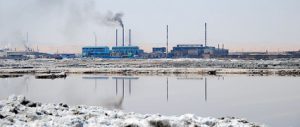Carbon trading isn’t working, and doesn’t show any signs of improving either. The biggest experiment in carbon trading so far, the European Union Emissions Trading Scheme, has been a spectacular failure, which has not made significant emissions reductions, has absorbed enormous amounts of political will and attention and has acted as a huge subsidy for some of the biggest polluters in Europe, with a handful of energy companies making billions of Euros in profit without having to reduce their emissions.
Free-market ideologues still trumpet the virtues of carbon trading, but a host of NGOs, businesspeople and even government bodies now admit that we got it badly wrong. In the United Kingdom, the Committee on Climate Change – an independent advisory body to government – said they could not “be confident that the EU ETS will deliver the required low-carbon investments for decarbonisation of the traded sector” and recommended the use of more traditional regulatory intervention.
Outside of Europe, carbon trading has not brought “clean development” to developing countries: it has provided large profits to industrial elites, who have tended to plough those profits into expanding polluting industries. Many communities in countries where offset projects under the Clean Development Mechanism (CDM) have been carried out have suffered as a result of being evicted to make way for dams, or have had to cope with waste incinerators being built in residential areas – all in the name of providing carbon credits, so that rich countries and companies can continue polluting at will. The fixation with the CDM has also provided industrialised countries with a benevolent façade in climate-change negotiations, making a show of supposedly financing clean technologies, while conveniently ignoring the much more substantial sums that need to be paid for adaptation and technology transfer.
In April 2009, climate-change activists erected a protest camp outside the European Climate Exchange, the biggest carbon trading hub in the world, located in the financial district in London. These protesters were angry that carbon trading was actually making things worse by allowing the introduction of new carbon-intensive infrastructure in the United Kingdom, including the proposed first coal-fired power stations to be built in 30 years.
This frustration with carbon trading has been validated by a number of recent reports, which contribute to the growing critique of carbon trading. Last week at the climate-change talks in Barcelona, Spain, Friends of the Earth released “A Dangerous Obsession – The Evidence Against Carbon Trading and For Real Solutions to Avoid the Climate Crunch”, which recommends an immediate end to the expansion and interlinking of further carbon-trading schemes around the world.
But it is not only environmentalists who voice criticisms of carbon trading. A recent report from Deutsche Bank concluded that the carbon market is not likely to contribute to significantly cutting emissions “for the foreseeable future.” Billionaire businessman George Soros has also expressed scepticism, saying “The system can be gamed; that’s why financial types like me like it – because there are financial opportunities.”
The recent global financial crisis has dramatically highlighted the folly of dogmatic belief in the omnipotence of free markets. It is an ideological anachronism to promote those same free-market forces and processes of financialisation as being an effective means of bringing about the urgently needed transition to the global low-carbon economy.
Kevin Smith is a London-based researcher with Carbon Trade Watch, which is a project of the Transnational Institute.
At the end of the month, Carbon Trade Watch will publish the book Carbon Trading: How It Works and Why It Fails (Dag Hammerskjold Foundation). It will be available to download free online.
Homepage image by sharkbait


